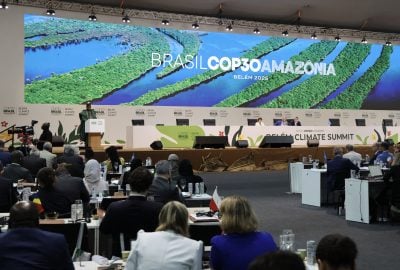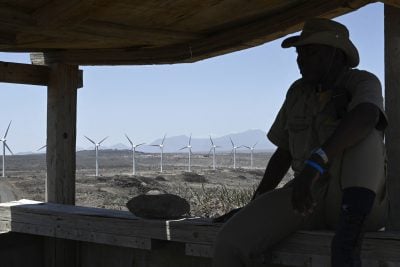Why is the Simandou mine so important?
The Simandou mine, located in Guinea’s southern Nzérékoré Region, contains an estimated 2.25bn tonnes of high-grade iron ore, making it one of the largest deposits of its kind in the world.
Analysts have long believed the mine could produce 150 million tonnes of the key steel ingredient per year, doubling Guinea’s GDP and creating thousands of jobs in the process. As the world’s second-biggest bauxite producer, Guinea already supplies 20% of the world’s bauxite, mainly to Russia and China. The ore accounts for around 35% of the West African nation’s GDP, estimated at $26.5bn in 2020.
Yet for years, labyrinthine legal disputes between miners and government, corruption allegations, changes of government and the absence of infrastructure to export the mineral have stifled development at Simandou. After repeated ownership changes, the project’s future appeared brighter in 2020 after the China-backed SMB-Winning consortium signed an expansive deal to develop the northern part of the site (Blocks 1 and 2), including the construction of railway and ports infrastructure through its Winning Consortium Simandou (WCS).
In the southern half of the deposit (Blocks 3 and 4), Anglo-Australian miner Rio Tinto, which has held rights to Simandou since 1997, owns a 45.05% stake, alongside Aluminium Corp of China (Chinalco) (39.95%) and Guinea’s government (15%.)
Why is the project back in the news?
On March 11, Guinea’s military government – which overthrew President Alpha Condé in September – suspended all work at Simandou, saying it was seeking clarification on how Guinea’s interests will be served by the project. In a statement, interim president Mamady Doumbouya said that he had not seen any progress at the project.
The decision to halt work prompted another round of discussions with Rio Tinto and WCS, leading to an agreement under which the firms will collaborate on a 670-kilometre “Transguinéen” railway and a port to allow the commodities to reach global markets, particularly China, which is attempting to wean itself off Australian iron ore amid geopolitical tensions.
Forcing a deal between the firms on the infrastructure – one of the major hurdles to a successful project at Simandou – was seen as a key government goal in the talks.
Under the terms of the new deal, Guinea will obtain a 15% stake in the rail, port and mine, and once completed, the infrastructure will become state property to be managed by a public agency. Guinean minister of mines Moussa Magassouba said that the deal is “a win-win partnership for all parties” and required the firms to put “egos” and “interests” to one side.
“It’s now clear that the government also wanted to ensure they were retaining more control of the infrastructure from the outset, rather than having it transferred to the state at the end of the Simandou mine lifecycles,” says Eric Humphery-Smith, senior Africa analyst at Verisk Maplecroft.
According to reports, the government has also insisted on more local content provisions in the deal, including jobs and training for Guineans.
What does the latest deal mean for Simandou’s production timelines?
Significantly, the deal includes strict new project deadlines that the miners must meet if they are to retain their holdings. The government says that railway and port infrastructure must be completed by the end of 2024, and commercial production must start by March 31, 2025. Mines minister Magassouba has referred to the deal as a “very precise calendar with significant penalties up to and including the withdrawal of the mining licence, for any mining company that does not respect its commitments.”
Analysts say those timelines appear ambitious given recent history.
“The agreement also introduces significant penalties – up to and including expropriation – for failure to respect a highly ambitious development timeline that requires project launch in early 2025. The worry for investors is that this ultimatum may incentivise the developers to cut corners,” says Humphery-Smith.
What other difficulties does the project face?
The government hopes that the strict deadlines will inject urgency into proceedings and end over two decades of stop-start development. But the long-term stability of the military government that struck the deal is unclear. Guinea remains suspended by West African group ECOWAS following the coup, which has demanded a return to civilian rule and placed the country under economic sanctions. Without regulatory certainty, the terms of the project are likely to change again, disrupting progress and pushing timelines back and forth. And that is just one of the challenges facing the project. Humphery-Smith lists several others.
“While the joint agreement dilutes the financial exposure of both partners, the same cannot be said for the complex and challenging ESG risks associated with developing Simandou. The sheer scale of the project means that scrutiny and tensions around issues such as local content, biodiversity and governance will be supercharged.”
Want to continue reading? Subscribe today.
You've read all your free articles for this month! Subscribe now to enjoy full access to our content.
Digital Monthly
£8.00 / month
Receive full unlimited access to our articles, opinions, podcasts and more.
Digital Yearly
£70.00 / year
Our best value offer - save £26 and gain access to all of our digital content for an entire year!
 Sign in with Google
Sign in with Google 



